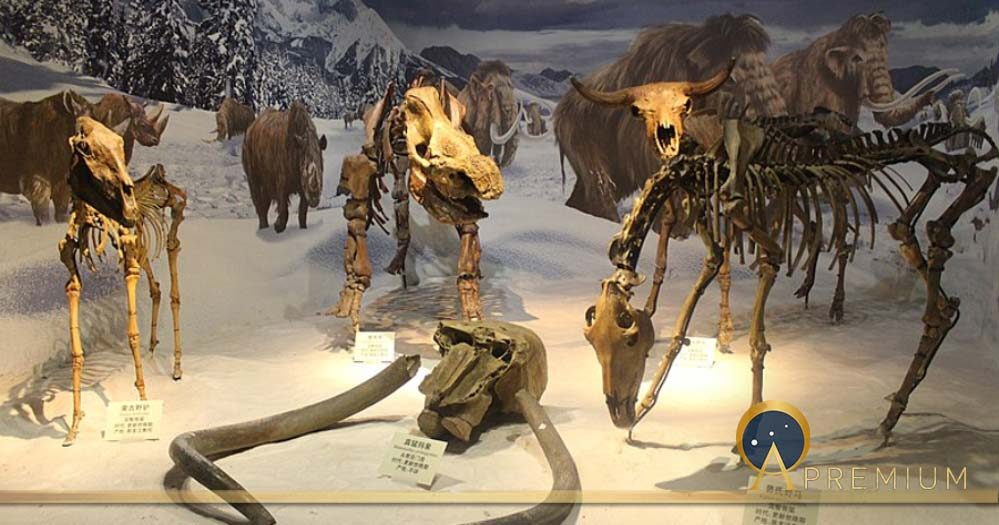
© Jonathan Chen / CC BY-SA 4.0Ice Age Diorama. From left to right: Equus hemionus, Mammuthus primigenius, Coelodonta antiquitatis, Bison exiguous skeletal mounts at the Tianjin Natural History Museum.
The Younger Dryas impact hypothesis has received considerable attention since its publication in 2007 in the prestigious peer-reviewed journal
PNAS (Proceedings of the National Academy of Sciences).
It suggests the Younger Dryas geological period and mini Ice-Age, from around 10,850 to 9600 BC, along with associated megafaunal extinctions and human societal changes, was triggered by a catastrophic cosmic impact, probably with a fragmented comet from the Taurid meteor stream.As of now, this paper by Richard Firestone, Allen West and Simon Warwick-Smith and colleagues has amassed over 550 citations in
Google Scholar - which is a lot! It is on its way to becoming a classic. But it has also received more than its fair share of criticism, mostly sustained from just a handful of vehement opponents. But has any of their criticism stuck? And what is the status of Firestone
et al.'s paper today? Has the dust settled on an outcome? Are we there yet?

© Evolution of temperature in the Post-Glacial period according to Greenland ice cores/CC BY-SA 4.0Evolution of temperatures in the post glacial period, after the Last Glacial Maximum (LGM), showing very low temperatures for the most part of the Younger Dryas, rapidly rising afterwards to reach the level of the warm Holocene, based on Greenland ice cores.





[Link]
NASA CHIEF WARNS ASTEROID THREAT IS REAL: 'IT’S NOT ABOUT MOVIES - May 1, 2019
Asteroids could very well hit Earth in the near future and cause widespread destruction, according to NASA.
NASA's administrator emphasized the significance of planetary defense in protecting people against possible asteroid and comet impacts during his introductory speech at the 2019 Planetary Defense Conference on April 29.